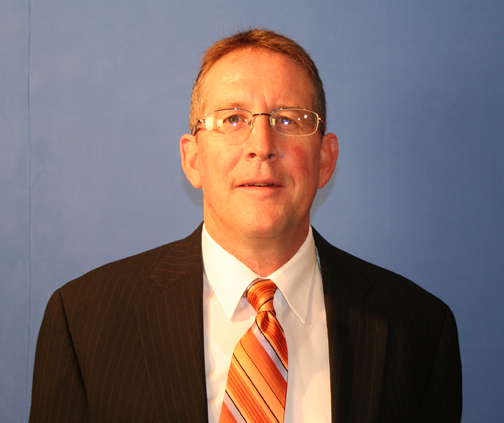 The Environmental Law Institute conducted an e-mail interview with Dr. Loren Smith, 2011 National Wetlands Award recipient for Science Research.
The Environmental Law Institute conducted an e-mail interview with Dr. Loren Smith, 2011 National Wetlands Award recipient for Science Research.
Why did you start studying playa wetlands and what do playas provide for people and nature?
I started studying playas because there wasn’t very much known about them and when you see one as an ecologist for the first time you immediately recognize their importance and how vulnerable they are to human disturbance. That’s because they exist in a very unique semiarid area of the U.S. called the western High Plains and any aquatic feature in that type of environment is valuable. This area is also one of the most intensively farmed regions in the Western Hemisphere, so playas are the primary natural habitats remaining in that part of the world.
Playas provide vast ecosystem services to society by acting as: key sites for wildlife habitat and other native biodiversity; primary points of Ogallala Aquifer recharge (this is the largest aquifer in North America); important areas of floodwater storage; sites of contaminant amelioration; areas of cultural historical significance; and primary areas for recreation and aesthetic value. Although most people in the region may not realize it, playas are responsible for the health and well being of the High Plains.
Probably the biggest misunderstanding of playas is just not comprehending how important they are from the ecosystem services perspective I outlined above. Moreover, because historically there were over 60,000 playas, people may not think an individual playa matters that much. However, because there has been so much playa loss and it is the playa system as a whole that provides the services to society, loss of any one playa has a negative effect on the entire system.
What can farmers and conservationists do to protect playas?
Because the biggest threat to playas is sedimentation, planting native grasses around playas as a buffer will protect them from filling in with sediments. Sediments come from eroded soils on cultivated farmland surrounding playas. So, many playas have been lost to sediment accumulation and vast numbers are now playa fossils.
What is the research question you are most interested in, and what do you hope to learn from it?
I am most interested in now studying how we can provide, and target, conservation programs to provide the most sustainable ecosystem services to society. Any time a change is made in the High Plains landscape it will affect playas, sometimes positively, sometimes negatively. I think we will learn that when we can target conservation toward the maintenance of the natural hydrology of playas, this should lead to the maximum provision of services on a sustainable basis.
How do you engage professionals across different disciplines to address complex challenges and work toward implementing conservation programs? Similarly, how do you engage policymakers?
The big questions remaining in wetland science and conservation require interdisciplinary teams with broad perspectives. I very much enjoy hearing different views on a problem; it is fun to learn different subjects—other than the ones you were trained on in college. Moreover, it is through this synergism of diverse discussion that effective approaches to problem solving become clear. We engage people across different disciplines such as hydrology, soil science, mathematical modeling, engineering, and ecology by trying to get collaborators excited with big, complex questions. In order for co-investigators to work effectively together, they must be excited about the science. Of course, to answer these complex questions it requires a good bit of funding. So, I also try to find governmental and private sources out there to make it possible to finance this interdisciplinary research.
I generally try to engage upper level policymakers from a fiscal perspective so that they know that any research or conservation dollars expended on wetlands is a good investment. For example, the highest density of Conservation Reserve Program (CRP) lands in the U.S. is in the High Plains. This program has profound influences on wetland conservation there, even though it is targeted mainly at uplands, and tens of millions of dollars have been spent on this program for landowners throughout this region. For policymakers that drive specific conservation practices on the ground, we engage them more from a conservation service perspective. For example, we can demonstrate that stopping upland erosion also benefits the hydrology of wetlands and all the wildlife that occupies them. We do this through publications, seminars, and workshops.
You’ve been the advisor for nearly three dozen graduate students. What do you most enjoy about teaching, and what message about playas conservation do you share with your students?
I happen to be one of the most fortunate professors around because of the hard-working and dedicated graduate students I have had the privilege of working with; they have been terrific researchers. The thing I most enjoy about teaching is seeing the development of problem solving and critical thinking skills. There is nothing more pleasurable than seeing a student think through an issue and then apply that knowledge to solve a problem or develop a plan.
The message I most often try to communicate with my students, agency personnel, or the general public is that wetlands do not operate in a vacuum. That is, you cannot simply look at the wetland itself to understand wetlands and their problems. You must look at the surrounding environments to understand wetlands. The things that occur in the watershed and catchments of wetlands generally have a more important impact on wetlands as a whole than most other factors occurring within the wetland itself.
